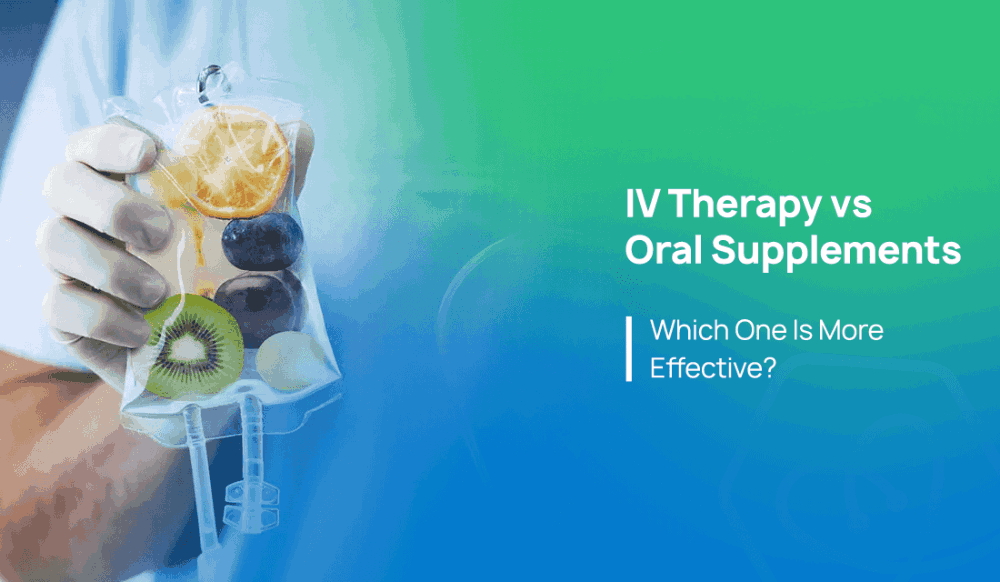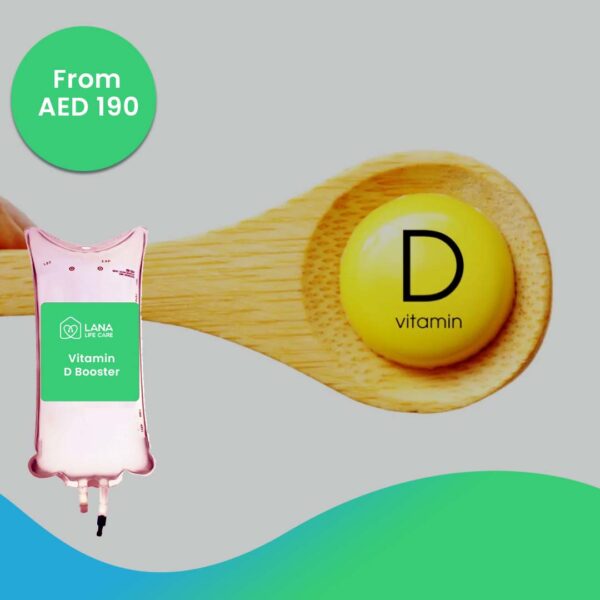
Treatment methods are numerous and vary greatly, as some are oral, while others are administered intramuscularly or intravenously. Each method undoubtedly has its own advantages and uses, and the appropriate one is selected based on each individual’s health needs and the doctor’s point of view. In this context, we will review IV therapy vs oral supplements in detail.
IV therapy, like IV drip, is a way used to deliver medications, whether painkillers, vitamins, minerals, antioxidants, and others, to the bloodstream immediately via the patient’s vein.
This therapy bypasses the ordinary process of drug absorption through the digestive system to ensure that the drug concentration is delivered to patients completely, resulting in effective and fast treatment.
There are several fundamental and significant differences between oral therapy and intravenous therapy. Below is a comparison of IV therapy vs oral supplements to illustrate the most important of these differences:
Logically, the first point to be mentioned in IV therapy vs oral supplements is the absorption points, especially since the effectiveness of the treatment is what any patient looks for the most. In IV therapy, absorption rates of nutrients or the active ingredient may reach 100% because the drug is injected directly into the bloodstream and bypasses the digestive system, while oral supplements may interfere with the digestive system and food, which reduces the effectiveness and absorption of the drug.
Intravenous therapy provides a rapid increase in energy or pain relief, with noticeable results occurring shortly after treatment, perhaps during or after the first session.
Oral supplements, however, may take longer, potentially days or weeks, for patients to feel a noticeable improvement due to the slow absorption of oral vitamins.
Through intravenous therapy, a physician can provide customized blends for each patient based on their health needs, whether it’s vitamins alone or combined with minerals, antioxidants, or energy molecules such as NAD+, to achieve optimal results.
On the other hand, oral supplements are prepared with specific ingredients and concentrations determined by the pharmaceutical companies that manufacture them.
When comparing IV therapy vs oral supplements, we also find that IV therapy is ideal for those who seek quick recovery, suffering from nutrient and mineral deficiencies, suffering from dehydration, and who also desire wellness boosts.
Oral supplements are more appropriate for those who desire general wellness boosting or who are suffering from mild mineral and nutrient deficiencies that can be addressed over time.
One of the main differences between IV therapy vs oral supplements is the cost. The IV therapy requires a higher upfront cost, and the standard drips are also more expensive. While the oral supplements are more affordable and depending on the brand.
Therefore, when comparing iv vitamins vs oral per cost, the oral supplement will be the winner.
Another important difference between IV therapy vs oral supplements is the ability to take oral supplements anywhere, while IV therapy requires visiting health centers or asking for home nursing services.
Intravenous injections generally have no harmful side effects, but choosing a non-specialist service provider may result in pain and redness at the injection site, and when taking oral supplements, the patient may experience some digestive upset and nausea.
There are countless health and general benefits that a patient will gain when replacing oral supplements with intravenous therapy. The most prominent IV drip benefits are as follows:
Whether you choose intravenous injections or oral supplements, you should consult a specialist doctor to help you follow the best method of use that is appropriate for you. The basic path of use for each is as follows:
Oral supplements can be taken in pill form, tablets, or syrup. They pass through the digestive system, where absorption of the active ingredient begins in the intestines. The active ingredient reaches its peak concentration in blood plasma within 90 to 120 minutes.
The duration of treatment and the appropriate dosage are determined by the doctor, but individuals typically take 1 to 2 tablets daily for 3 to 6 months.
The route of delivery of the therapeutic solution is much shorter in the case of intravenous drip, as the solution is injected into the vein and reaches the bloodstream directly without passing the digestive system to ensure 100% absorption, and its effect is noticeable within hours.
The number of sessions is determined by the doctor, as sometimes one session may be sufficient, while the individual may need between 3 and 12 sessions, at a rate of 2 to 3 sessions per month, according to their health needs.
All health and medical reports have confirmed that intravenous therapy is significantly superior to oral supplements. This has prompted us at Lana Life Care to provide professional IV therapy services by specialists, including physicians and nurses trained to provide effective IV therapy without pain or side effects.
We provide all types of injections and intravenous drips, especially vitamins, as many people suffer from severe deficiency in most essential vitamins such as vitamin C, B complex, K, E, A, and vitamin D. We also provide mineral injections, antioxidants, NAD+, and others, using high-quality injection solutions that comply with global health and safety standards.
Contact us to book your first IV therapy session today.
Despite several benefits of IV therapy, it can sometimes result in pain and redness in the injection site, and a few people may face sensitivity reactions.
If you are suffering from dehydration, weakness, low energy, and severe nutrient deficiencies, so, yes, infusions will be better than pills for you.
Physicians can customize IV drip components according to the patient’s health needs, while oral supplements like multivitamin components are previously determined by the manufacturer
The pills pass through the digestive system, while IV solutions are injected directly into the bloodstream to ensure complete absorption.



